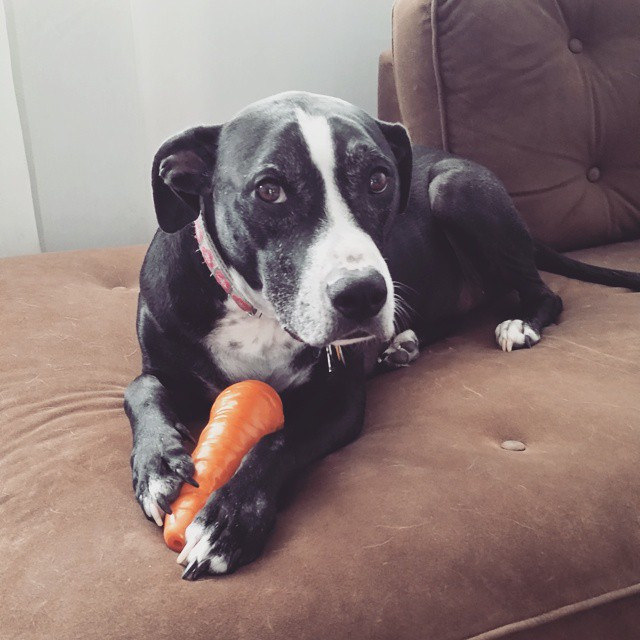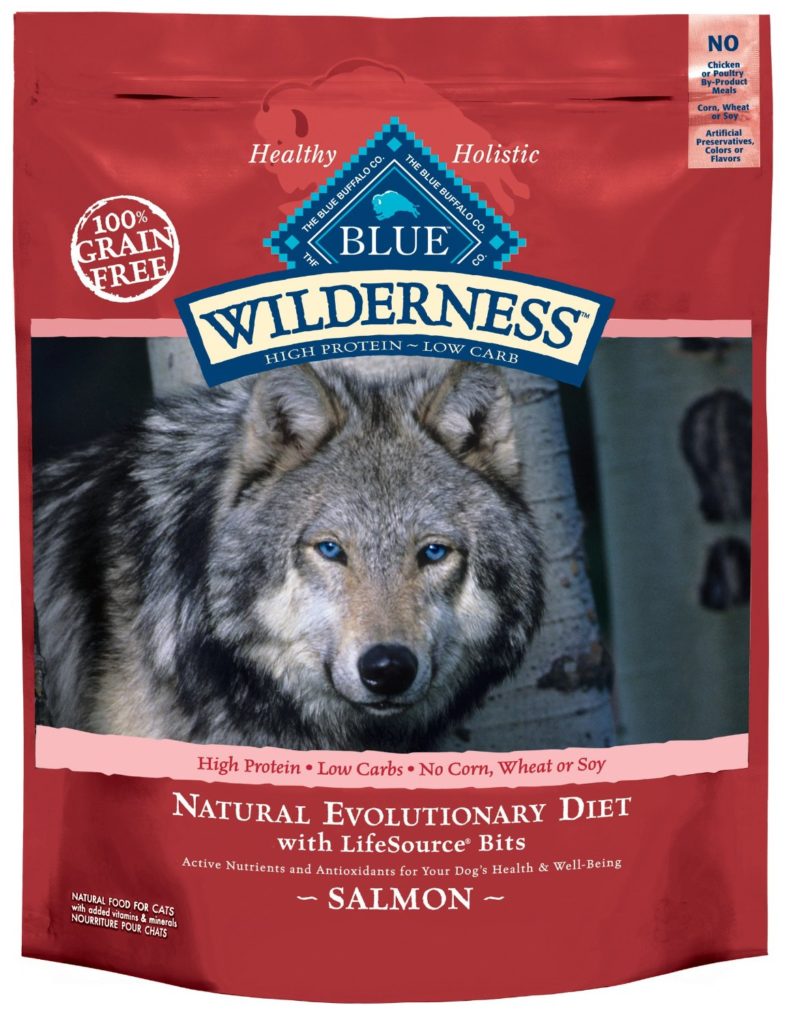
We think of dogs as carnivores – because they eat meat. Just like wolves, coyotes and other “dog-like” animals in the wild. But commercial dog foods are full of vegetables, legumes, fruits and grains. And the companies that make them claim they are giving your dog “complete nutrition.” Then there are the dogs on BARF (Biologically Appropriate Raw Food) diets – which includes meat, fruits, vegetables and bone.

Dr. Oscar Chavez BVetMed MRCVS MBA is a licensed veterinarian and Chief Medical Officer for JustFoodForDogs, a company specializing in homemade, whole nutrition diets that have been proven in studies by an independent university to be healthier than other foods. He helped them come up with their diets, which are all based on a dog’s biological needs. We thought this made him the perfect person to answer this question:
Are dogs really carnivores?
OC: Dogs are omnivores, like us. Some animal enthusiasts refer to them as facultative carnivores, claiming that they require meat in their diet to thrive. This is only true to the same extent it is true for humans.
Most humans will not thrive on a plant diet alone, without supplementation and some important considerations to certain nutrients. However, they are not obligate carnivores and are truly omnivores.
For example, cats (true carnivores) must get their vitamin A from animal organs such as heart and liver, they cannot convert Vitamin A from plants. Dogs and humans have the ability to convert beta carotene found in vegetables into Vitamin A.

Can you explain a bit more about their diet?
OC: Dogs are omnivores and have a similar metabolism as humans. Strictly speaking this means that they obtain their energy, in the form of glucose, from the digestion of carbohydrates, high density lipids found in fats, and also protein.
Cats, on the other hand, are defined as obligate (strict) carnivores, they must get their energy by maximizing gluconeogenesis, a process by which blood sugar is maintained by the breakdown of protein instead of carbohydrates. Cats have retained their ancestral metabolism but dogs have not.
Dogs have evolved their metabolism to match closer to ours, as was revealed in a study published in the journal Nature, which showed dogs’ evolved a similar genetic profile as humans in the portion of their DNA that codes for carbohydrate metabolism. The authors went on to hypothesize that this adaptation likely facilitated their domestication – they evolved to eat our leftovers, and thus to live with us.
Are wolves carnivores?
OC: Wolves are not classified as obligate carnivores, thus they would still be considered omnivores. The leader of the pack will eat the choice flesh, and the rest of the pack may eat the offal, filled with grains that the herbivore was eating before it died.
A more important point is why are we comparing our dogs to wolves? The Nature study has already found important genetic differences in this exact area. Furthermore, the “feed them like wolves” camp will use the statistic that wolves are 99% genetically identical to dogs to justify the comparison. Humans are 99% identical to chimpanzees, yet we cherish our 1% difference. Likewise, the 1% difference between dogs and wolves makes all the difference. It is why you can train a dog, live with a dog without fear of attack, and why a dog can read human body language. In behavioral experiments with wolves, they were independent of human cues and remained wild and unpredictable no matter the level of human interaction.
We accept that wolves are vastly different in behavior than dogs, but yet some are not willing to consider the same difference in nutritional needs. It simply doesn’t make sense.

So we shouldn’t we feed our dogs on a “wolf or coyote diet”?
OC: No – they are not in the wild and they are not scavenging and living a short life. Our dogs are living 2-3 times as long as wild animals and need a complete and balanced diet in order to get there. They need one that is moderately balanced in protein, fat, and carbohydrates so that we don’t stress any one or two organs with excesses of any one of the three energy producing nutrients.
How do we know what our dogs really need to eat to be healthy?
OC: The most recognized authority on canine nutrition in the USA and around the world is the 2006 National Research Council’s publication on Dog and Cat nutrition. It lists the RA (recommended allowance) for the approximately 45 essential nutrients a dog needs.
It does not list carbohydrates as an essential need for healthy dogs, and many online enthusiasts have interpreted that to mean that dogs do not need carbs. This is a misunderstanding of this important fact. While it’s true the NRC does not specify a carbohydrate minimum or recommended allowance, it does not mean some dogs do not need carbohydrates. For example, there are some dogs that will create urinary stones or come down with kidney disease. For these dogs, it is important to obtain calories from a non-protein source. Since calories can only come from fat, protein, or carbohydrates, in this case these dogs must get some calories from carbohydrates. In fact, carbohydrates can save these dog’s lives or significantly impact their quality of lives. It’s a shame that many people have misinterpreted this nuance from the NRC publication and have used it in their demonization of wholesome carbohydrates.
We Can’t Possibly Duplicate The Wild

As Dr. Chavez mentioned above, there are some brands of processed kibble or raw food diets that claim we need to fed our dog’s like their wolf “ancestors.” But the truth is, NONE of these companies are truly offering what a wolf eats in the wild:
OC: No one – not the raw folks, not the high protein kibble, is actually achieving “feeding them like in the wild.” In the wild, a wolf or coyote take down a fresh carcass or scavenge a recent kill. The meat is freshly killed, still biologically active with loads of active enzymes and nutrients that simply do not exist with raw meats that have been slaughtered or “prepared.” A fresh kill prey is much more wholesome and nutritious than a piece of raw meat that has been cut, frozen, transported, defrosted, and served. This is not feeding them like in the wild. It’s only purpose is that it’s a great marketing tagline. Add to that the fact that a majority of raw diets now can contain 4-D meat – dead, dying, diseased, or disabled and the poor quality of this meat that is not fit for human consumption is also a concern.
Further Reading
If you are interested in ready about the studies Dr. Chavez mentions above, along with some other research, he recommends these links:
JFFD Whitepaper covers all of this and more!!
Legitimate use of 4-D meat for racing greyhounds
Nature Study – dogs evolved to eat carbs, and are not wolves (mentioned above)
JFFD Crash Course on Nutrition
NRC 2006 Publication on what dogs/cats need
